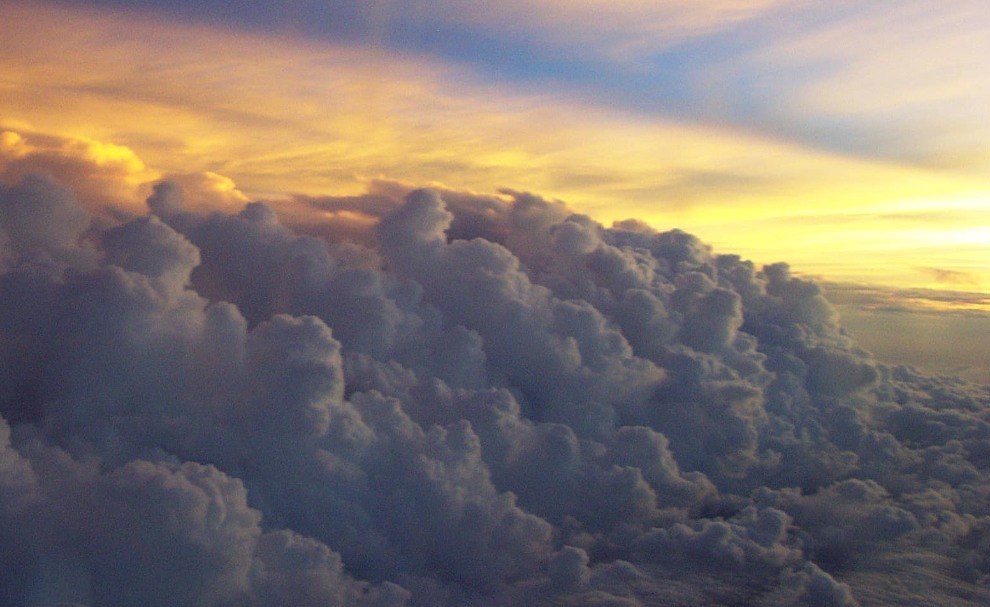Part of a series of articles titled Coastal Geomorphology—Tropical Storms.
Next: Anatomy of a Hurricane
Article

NOAA image.
Certain conditions have to exist for tropical cyclones to form: (1) warm sea surface temperatures, which serve as the “fuel source” for hurricanes; (2) light westerly winds aloft, which keep thunderstorms that build vertically as part of the hurricane intact; and (3) rotation, which is generated by the winds coming together. Without rotation, a hurricane would be just another low-pressure system.
Sea temperatures of at least 80°F (26.5°C) are required to spawn hurricanes. The warm water evaporates and subsequently condenses in the hurricane, releasing latent heat. Hence, the ultimate “death” of a hurricane occurs over land or over bodies of cold water, which either lack the necessary moisture or heat source or both. As warm air rises from the ocean’s surface, a zone of low pressure is created. As more air comes in to “fill the low-pressure void,” that air gets warmed and energized, and the process repeats itself increasing in speed if the water is warm enough. As the warm air rises, it cools and forms clouds (condensation). As this system grows, the low pressure area increases in size; this area will become the eye of the storm. Cool air descends into the eye, gains energy through evaporation when it comes into contact with the warm ocean water, and begins to rise itself, thereby continuing the cycle.
There are three prime locations where hurricanes develop in the tropical Atlantic basin: the Gulf of Mexico, the Western Caribbean, and the Cape Verde Islands. The Gulf of Mexico provides favorable conditions because water temperatures range from 85°F to 90°F (29°C to 32°C) during the hurricane season. The upper level winds in the Eastern and Central Caribbean are hostile; however, the same winds lessen in the Western Caribbean and provide favorable hurricane-building conditions. In late August around the Cape Verde Islands, the water warms enough for conditions to become very favorable for hurricane development. Cape Verdean storms are the most powerful of the three.
Part of a series of articles titled Coastal Geomorphology—Tropical Storms.
Next: Anatomy of a Hurricane
Last updated: June 4, 2019